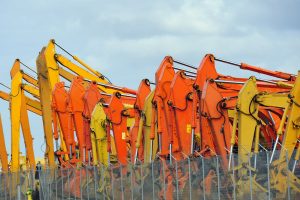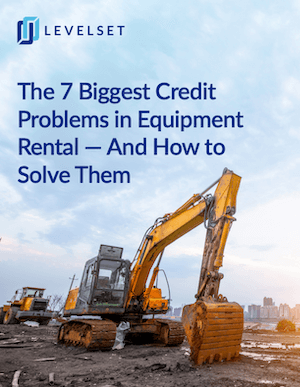
Quite a few of our customers here at Levelset are in the equipment rental business, and from our conversations with them, we know that keeping track of their equipment in the field is a huge challenge.
We’re not talking about the everyday challenge of tracking the equipment as it moves around a single jobsite. The scenario we want to discuss here is far more complicated (and unfortunately, all too common): the occasion when a piece of equipment is moved from the original jobsite to another jobsite (or several more jobsites) altogether.
When this happens, it can affect the rental company’s legal right to secure mechanics lien protection, further complicating an already challenging situation.
How a mechanics lien works (generally)
Using a hypothetical situation, let’s say that an equipment rental company’s customer does not pay the money they owe on a construction project. After trying and failing to collect the money they’ve earned, the equipment rental company decides to file a mechanics lien.
Even though the customer that rented the equipment is the party that didn’t pay, a valid mechanics lien claim attaches to the property that’s being worked on over the course of the project – i.e., whatever is being built at the jobsite itself – and not to the company that rented the equipment – i.e., the customer.
In practical terms, this means that when the equipment rental company files their mechanics lien, it’s really the property owner that’s on the hook due to the nonpayment. By securing an interest in the underlying property, the equipment rental company gains the leverage needed to ensure that they’ll end up getting paid the money they’re owed.
And you better believe that the property owner is going to do everything they can to make sure that the equipment rental company’s delinquent customer pays up since a successful lien claim will have a significant impact on their ability to do anything with the property.
What Happens When Rental Equipment Goes From Jobsite to Jobsite?
Just like other types of construction businesses, equipment rental companies are not immune from payment issues on their projects. But there is one unique challenge facing these companies that is not necessarily shared by others in the industry — the fact that the rented equipment can be moved from jobsite to jobsite.
Even though this scenario happens fairly often, chances are that an equipment rental company doesn’t always know that their equipment is going to multiple jobsites. (In reality, it may be more accurate to say that they hardly ever know when their equipment is taken to another site.)
Because a valid mechanics lien claim attaches to the property, the multiple-jobsite scenario presents a unique challenge. If the equipment has been taken to multiple jobsites, each located on a separate piece of property, then which property owner is the equipment rental company supposed to file the lien against?
Is it the original piece of property that may or may not be identified in the lease agreement the customer signed? Should it be one of the other pieces of property? Does it need to be all of the pieces of property that the equipment traveled to?
Download a free rental agreement template
What if the equipment rental company doesn’t know all of the relevant info needed to identify the other properties and property owners?
Even when the equipment rental company is able to determine through the GPS data that their equipment is moving around and away from the original jobsite, that doesn’t necessarily mean that they’ll be able to identify the other jobsites where the equipment was taken.

Get the credit guide
Download a free guide to learn how to solve the 7 biggest problems that credit teams face in equipment rental companies.
How Levelset Can Help
In order to fully protect an equipment rental company’s lien rights, it’s important to know the identity of every single jobsite (and the project owner) that their equipment visits during the course of one rental engagement. This is true whether multiple jobsites are allowed in the rental agreement or not.
The reason why is that you’re going to want to send preliminary notices to the owners on all of those jobsites alerting them that your equipment was used on their project. In most states, this process of sending notice is required in order to secure your lien rights.
But if you’re not aware that your customer intends to take your equipment to other jobsites, then how can you protect yourself? Here are a few ways that Levelset’s equipment rental customers handle this situation:
They Ask their Customer – Simply asking your customer for all of the jobsites they plan to use the equipment sounds obvious, but it works. And Levelset’s JobSight Team can verify all of the information provided to make sure it’s complete and accurate.
They Give Levelset the Customer’s Name – With the customer name of the equipment rental company in hand, Levelset’s JobSight Team usually has all the information they need to track down all of the other potential jobsites where the equipment could have been used.
They Provide Levelset with a Record of GPS Coordinates and/or Equipment Location Map – These days, the vast majority of equipment rental companies have at least some of this data. And while it can be challenging to use by itself, the GPS or Map data taken from the tracker on the equipment itself can help fill in the information needed in order to secure lien rights.
The best case scenario is for the equipment rental company to provide Levelset with a mixture of all of the information listed above. That way, we’ll have the best shot at finding all of the relevant jobsites that your equipment visited.

Protect & speed up every payment
Learn how Levelset can help you easily manage your lien rights on every project to ensure your payments are always protected.
